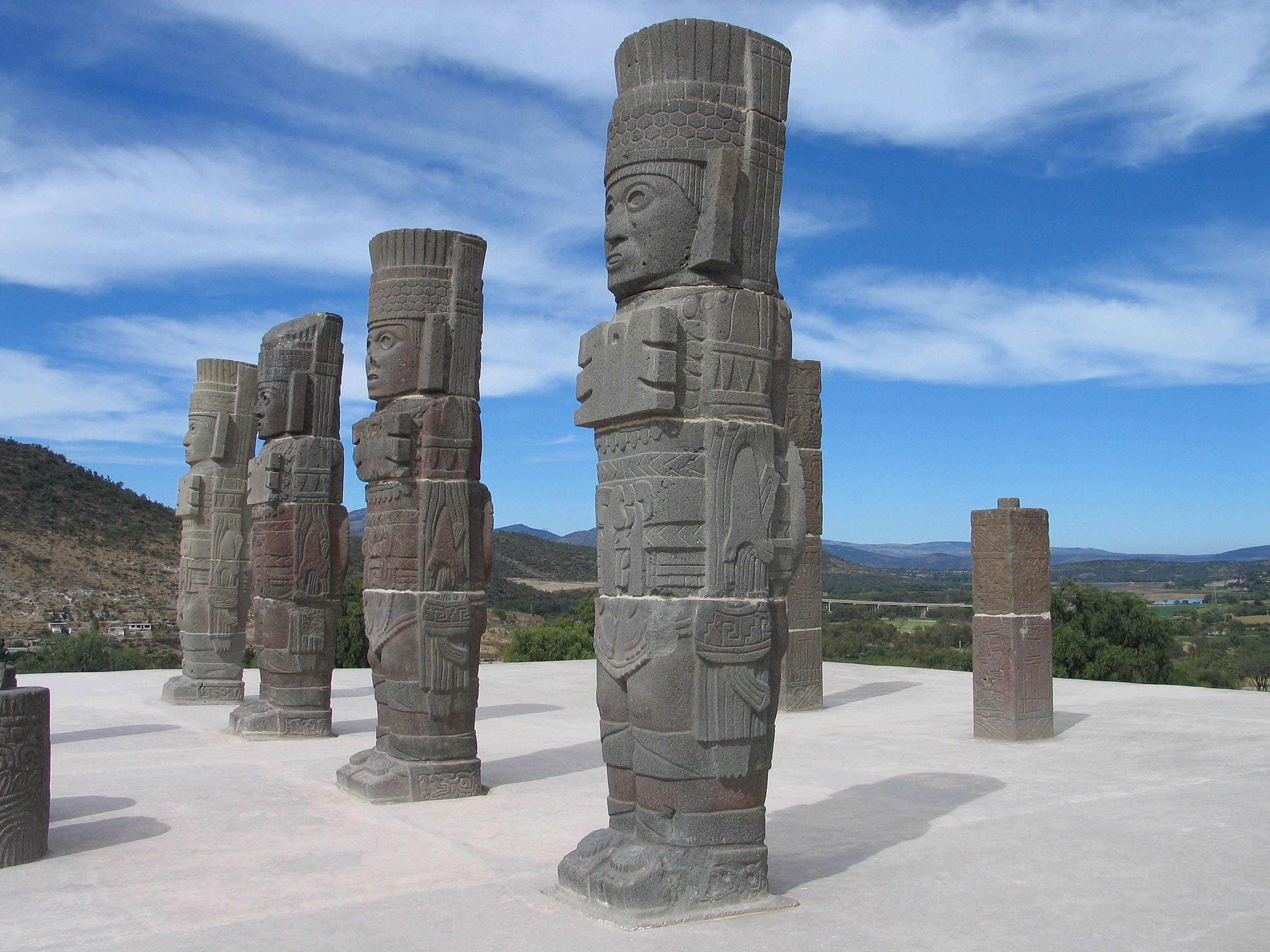All AP Art History Resources
Example Questions
Example Question #12 : Architecture Beyond European Artistic Traditions
Mesoamerican architecture usually features the __________.
minaret
thatched roof
flying buttress
stepped pyramid
stepped pyramid
In Mayan, Toltec, and Aztec architecture, the chief building style was the large stepped pyramid, which allowed it to be climbed entirely. These pyramids were the center of any settlements, and were frequently utilized by the priest-kings of these cultures for ceremonial and administrative purposes. After centuries of neglect, these massive structures are usually the only elements of Mesoamerican architecture that remain.
Example Question #13 : Architecture Beyond European Artistic Traditions
Mayan architecture was dominated by what kind of building?
The vaulted hall
The onion dome
The minaret
The pyramid
The galleried temple
The pyramid
All Mayan cities and temple structures revolved around the pyramid. Typically featuring steps to the top of the pyramid and terraces, the Mayas used the pyramid for temples, palaces, and most other important buildings. The use of the pyramid was highly influential for later Mesoamerican cultures, such as the Aztecs.
Example Question #1 : Answering Other Questions About Architecture Of The Americas

When the Aztecs discovered the abandoned Toltec city in Hidalgo, Mexico, where these Atlantean figures are located, what did they imagine the pillars represented?
An ancient warrior race from a distant land
Aztec gods, such as Quetzalcoatl
Mitla gods
None of these
Coatlicue, the Mother of all Gods
Aztec gods, such as Quetzalcoatl
While Atlatean figures are generally carved to represent fierce, bellicose men, when the Aztecs found these pillars centuries after the Toltecs abandoned their city, they imagined that the pillars represented their own gods, such as Quetzalcoatl, and considered the city itself divine. They even went so far as to consider the Toltec civilization their own ancestors, and told and recorded multitudes of stories of the exploits of the Toltec people.
Image accessed at: https://commons.wikimedia.org/wiki/File:Telamones_Tula.jpg
Photograph by Luidger
Example Question #2 : Answering Other Questions About Architecture Of The Americas

What were Atlantean figures, such as the ones found in Tula, Hidalgo, created by the Toltecs, originally meant to represent?
Quetzalcoatl
Huitzilopochtli
Tlaloc
Victims of human sacrifice
Fierce warriors
Fierce warriors
Although the Aztec people thought that the Toltec civilization, as their supposed ancestors (according to them, at least), had carved out depictions of their gods, such as Quetzalcoatl, in actuality, the Atlantean figures are meant to represent fierce warriors.
Image accessed at: https://commons.wikimedia.org/wiki/File:Telamones_Tula.jpg
Photograph by Luidger
Example Question #4 : Answering Other Questions About Architecture Of The Americas

Who or what was responsible for the destruction or disappearance of the civilization that left behind these Atlantean figures, found in Tula, Hidalgo?
Spanish conquerors besieged the Mayan city and built their own atop its ruins
It is unknown what truly happened to the Toltec civilization
A strong hurricane destroyed Tenochtitlan and its surrounding areas, since it had been built on a lake, and therefore wiped out the Aztec civilization
It is unknown what truly happened to the Olmec civilization
The Toltec civilization was destroyed by a raiding war band of the nomadic Olmec civilization
It is unknown what truly happened to the Toltec civilization
Although the Aztec civilization provides its own written mythology as to the conquests, exploits and history of the Toltec civilization, as they considered the Toltec people to be their ancestors, it is actually unknown what eventually caused the decline and disappearance of the Toltec civilization, which is the civilization that left the ruins of a great city in Tula, Hidalgo, along with the Atlantean figures pictures above.
Image accessed at: https://commons.wikimedia.org/wiki/File:Telamones_Tula.jpg
Photograph by Luidger
Example Question #383 : 3 D Art
Cliff Palace is stone and mud mortar building set into the side of a mountain by the ancient Puebloan people, also known as Anasazi.
What was the architectural center of a family unit for the Anasazi at places like Cliff Palace?
A master bedroom
The main kitchen
Kivas- circular, underground rooms
Sipapu- a hole in the ground used for ceremonial purposes
The fire pit
Kivas- circular, underground rooms
The architectural center for a family was a kiva. A kiva contained the fire pit and the Sipapu. These spaces were covered by wood roofs and are sometimes still used by Puebloan people for ceremonies.
Example Question #3 : Answering Other Questions About Architecture Of The Americas

The pre-Columbian civilization responsible for the construction of Monte Albán, pictured above, occupied and culturally dominated which area of modern day Mexico?
Durango
Chiapas
Tabasco
Oaxaca
Nuevo León
Oaxaca
The Zapotec civilization of pre-Columbian Latin America occupied and culturally dominated the area of Mexico now known as the state of Oaxaca. The largest piece of evidence of their occupation of Oaxaca is the ancient city of Monte Albán, located only a few miles outside of the current capital of the state of Oaxaca, Oaxaca City.
Certified Tutor
Certified Tutor
All AP Art History Resources



